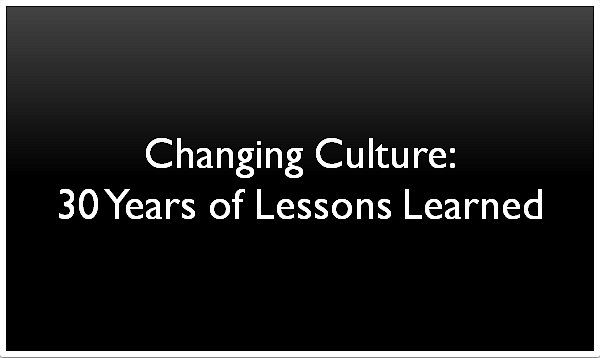
How To Improve Your Company’s Culture In 6 Simple Steps
How To Improve Your Company’s Culture In 6 Simple Steps
Articulate Your Company’s Vision
A company’s leaders must clearly understand its vision before staff can see how they contribute to its success. A company’s vision includes it’s core values along with what it wants to achieve and become in the long term. The problem is that many times executives formulate their company’s vision into overly grandiose statements that do not ring true to employees. You should craft a short, concise vision statement that every employee understands.
Host More All-Hands Meetings
We can never over-communicate the big items enough. The company values, metrics, goals, successes, learning’s, vision, mission…these should be talked about all the time. It’s even more power to do so in a group setting. You should also try and include food at all-hands meetings. Make it something employees look forward to rather than dread. The family that breaks bread together stays together. Buying food is a small price to pay for a great company culture.
Be Transparent
Transparency isn’t just positive for employees. The effects of a transparent company culture impact the entire organization and the people it serves. Transparency means giving your employees unfiltered insight into the company’s operations and future. It means giving employees a voice. And, most of all, it means trust. Because trust is truly the foundation of a great company culture.
Implement More Structured One-On-One Feedback.
The quarterly or annual performance review is often the only formalized setting for managers and employees to exchange feedback. That’s nowhere near enough. Begin setting up fifteen min one-on-ones with your team on a weekly or bi-weekly basis. You should also make yourself available to employees for quick little meetings in-between the weekly/bi-weekly meetings. These brief in-between discussions can do wonders to defuse the little issues and problems that typically spiral into larger issues later on. Don’t let a molehill become a mountain!
Build A Network Of Appreciation
You should make an effort to praise people for their good work publicly and criticize them privately. Public congratulations show employees that their work is being valued and having meetings that are of a more negative nature privately shows that you respect their dignity. Don’t try and embarrass people or hold back on the praise when praise is due.
Embrace And Inspire Employee Autonomy
No one likes to be micromanaged at work. Micromanaging is not only ineffective and inefficient but it’s poison to your company’s culture. You should trust the people who work for you to properly manage their own time and tasks responsibly. If not, why are they working for you? Measure quality of work not the number of overtime people put in.
There you have it, 6 simple ways to dramatically improve your company’s culture. For more help creating a great culture for your company visit CultureStrategyFit today!









